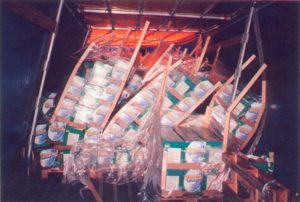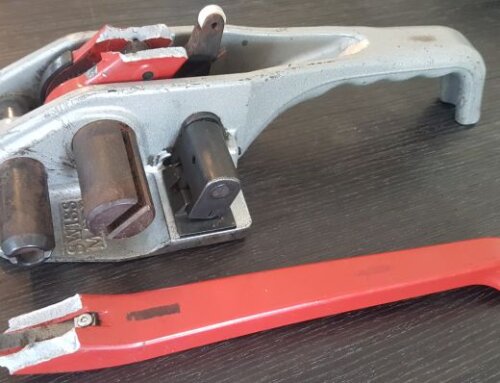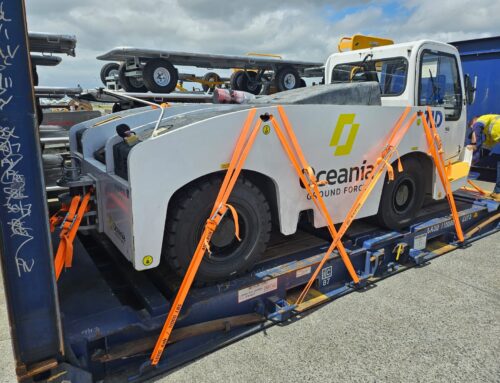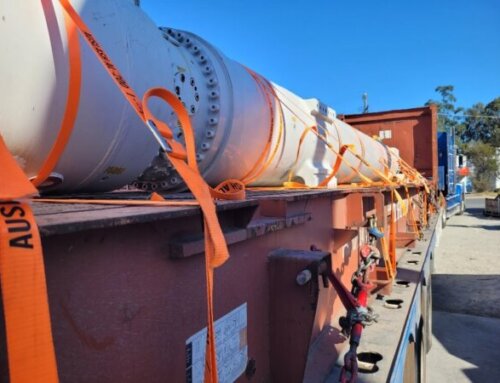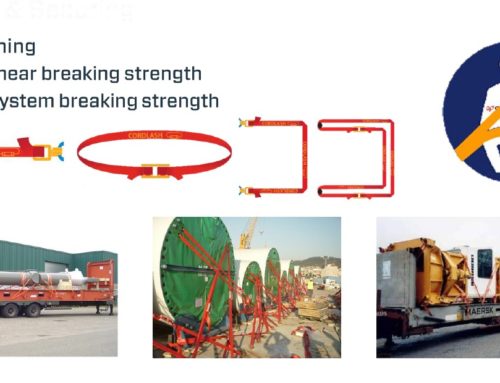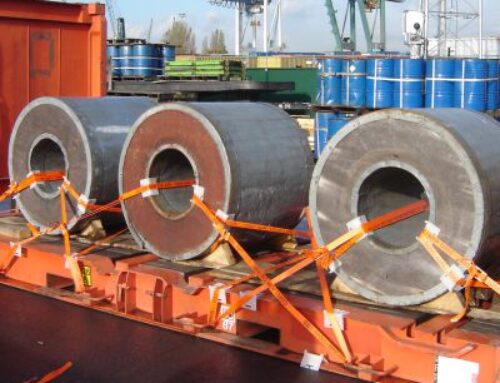Is Your Container Cargo Securing System Compliant and Certified?
Proper cargo securing prevents cargo from getting damaged during transport. It also reduces the chances of personal and environmental incidents.
A recent study showed that 65% of all container incidents are the result of poorly packed, blocked or secured cargo.
Australian CoR and Road Safety
If an (roll-over) incident happens on Australian Roads as a result of non-compliant secured cargo, anyone within the supply chain at your company that is exercising control or influence over any transport task (or has the capability to do so) can be held personally liable and risk imprisonment plus fines in the hundreds of thousands of dollars.
Extreme? Maybe… Especially when you are loading thousands of containers per year, are under time pressure and need to keep materials cost low. However, don’t forget that container roll-over incidents have killed and continue to lead to the loss of more lives on Australian Roads. Do you really want to be responsible for loss of human life that could have been prevented? It could also be your life, or that of a loved one. And, are you willing to risk going to prison for it?
What are the safety risks?
Freight in shipping containers that has not been safely secured can lead to the following hazards:
Unbalanced loading
If your load is incorrectly positioned, or has a high centre of gravity, it can affect a heavy vehicle’s stability, steering and braking performance. If your load is not balanced across and along the container this can make your vehicle unstable and increase rollover risk.
Inadequate or no cargo restraint
Poorly restrained or unrestrained cargo can move inside the shipping container when a heavy vehicle brakes, navigates corners or goes through round-a-bouts. This shifting of your cargo inside the shipping container can cause the vehicle to become unstable, increasing the rollover risk.
Safety risk for unloaders
Poorly or unsecured cargo will shift in transit. There is risk of death or serious injury when the container is opened and cargo falls out of the container, string or crushing workers in the immediate vicinity.
The National Vehicle Regulator
Changes to the Chain of Responsibility (CoR) laws were introduced on 1 October 2018. These changes aligned CoR laws more closely with workplace health and safety laws.
The aim of COR is to make sure everyone in the supply chain shares responsibility for ensuring breaches of the HVNL do not occur. Under COR laws if you are named as a party in the chain of responsibility and you exercise (or have the capability of exercising) control or influence over any transport task, you have a responsibility to ensure the HVNL is complied with.
The law recognises that multiple parties may be responsible for offences committed by the drivers and operators of heavy vehicles. A person may be a party in the supply chain in more than one way. For example they may have duties as the employer, the operator and the consigner of goods.
Legal liability applies to all parties for their actions or inactions.
You can learn more about the CoR in Australia on the website of the National Heavy Vehicle Regulator.
NHVR Charges Consignor on CoR Container Rollover
A Victorian building supplies company becomes the first consignor prosecuted by the National Heavy Heavy Vehicle Regulator (NHVR) under the 2018 Heavy Vehicle National Law (HVNL) chain of responsibility (COR) amendments.
It is charged with serious safety offences after a truck toppled onto a pedestrian island crossing (pictured above).
The heavy vehicle was loaded with a shipping container carrying 26 tonnes of imported timber plywood products when it rolled over in Dandenong on November 11, 2019.
The load’s consignor has been charged with exposing drivers, unloaders and members of the public to the risk of death or serious injury by failing to comply with sections 26G and 26H of the HVNL.
The importance of certification
In order to ensure the safe transportation of goods, both local and global bodies have produced rules and regulations – meaning that dependent on the journey and transport modality, a container will be subject to differing rules and regulations. As indicated above, not complying with these can cause incidents, or rejections.
CTU Code Certified
The CTU Code has a global reach and is written by three United Nations committees. Cordstrap container cargo securing solutions are calculated, simulated and tested for CTU compliance. These tests were performed and witnessed by leading certification agencies like Mariterm and Lloyd’s.
Talk to an expert
If you are in doubt whether you are compliant, or need assistance to become compliant give us a call. We would like to help you in any way we can. It will be our pleasure to meet for a free onsite consultation, or provide you with a loading plan. We are a global organisation and can also assist by advising your overseas suppliers.
Since 1965, Cordstrap has been the global leader in research, development, manufacturing of cargo securing solutions. We work together with regulatory bodies and our customers to develop time- and cost effective solutions. We provide complimentary cargo securing training and ongoing support, such a loading plans or a helping hand when needed. All our solutions are CTU Code Compliant and Certified.
Proper cargo securing does not have to be time consuming or expensive, and more importantly it should not send you to prison, cause damage to the environment or lead to the loss of lives.


